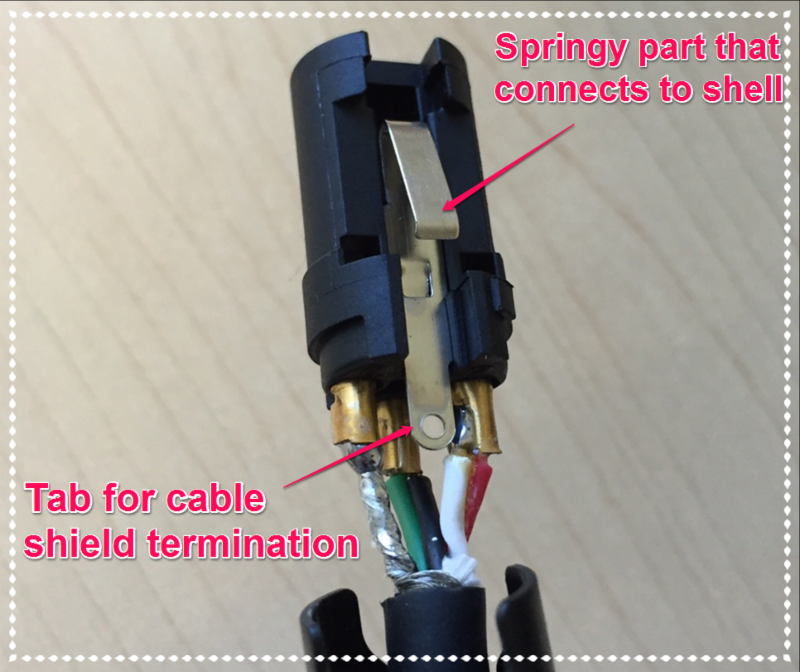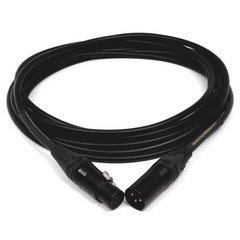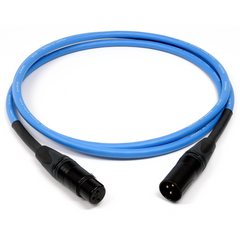Buy one component and save 10% on up to 2 cables. Buy 2 components and get 4 free cables. Free shipping on USA orders over $700.
Buy one component and save 10% on up to 2 cables. Buy 2 components and get 4 free cables. Free shipping on USA orders over $700.
Grounding XLR Connectors - Neutrik USA
by John Siau June 01, 2016

XLR Cable and Chassis Connector Grounding
"Neutrik is often asked whether the shiny silver tab on typical XLR cable connectors should be connected to anything."
"In the course of the evolution of the AV industry, it has come to be that this tab is practically never terminated. This means, in turn, that the shell is not grounded. When in doubt, simply leave this tab unterminated."
"Whether or not they are internally wired to the shield signal, XLR cable connector shells always make an electrical connection to chassis connector shells once the two are mated."
"Typically, chassis connectors need to be grounded. The industry best practice is generally to tie all of the chassis connector shells, pin 1 (cable shields), and the enclosure shield to a common ground."
Excerpts from:
Neutrik USA Today - Grounding XLR connectors - Volume 6, Issue 2, June 2016
Read the entire Neutrik application note →
Additional Reading: AES48 - "AES standard on interconnections - Grounding and EMC practices - Shields of connectors in audio equipment containing active circuitry."
Note: Benchmark uses Neutrik cable and chassis connectors because of their superior performance and durability.
In accordance with these best practices outlined above, Benchmark bonds pin 1 of XLR chassis connectors directly to chassis ground. Benchmark leaves the cable tab unterminated on all analog XLR cables, but terminates this tab on AES digital XLR cables.
Benchmark recommends leaving the cable tab unconnected on all analog XLR cables.
Benchmark terminates the cable tab on AES digital XLR cables to minimize radio-frequency emissions when two or more digital XLR cables are connected end-to-end. Digital cables that do not have the tab terminated should not be daisy chained.
Benchmark recommends tying the cable tab to the shield on all AES digital XLR cables.
Analog XLR Cables:
Digital XLR Cables:
Also in Audio Application Notes

How Loud is the Distortion from Your Power Amplifier?
by John Siau August 08, 2025
Would you put a Washing Machine in your Listening Room?
If the answer is no, you may be surprised to discover that the distortion produced by your power amplifier may be louder than the noise produced by a major appliance.
Don't believe me? Take a look at Stereophile's test reports:
We selected 7 power amplifiers from Stereophile's top list of recommended amplifiers.
We took Stereophile's "THD+N vs. Power" plots for each, and replotted the data in a format that shows the loudness of the THD+N at the listening position.
The results are shocking!
Amplifier THD+N is louder than expected!
The distortion from your amplifier may be louder than a washing machine on the spin cycle, or it may be totally silent. How does yours perform? The answer is hidden in Stereophile's THD+N plots.
This application note reveals the hidden truth:
"The Distortion from your Power Amplifier may be Louder than a Washing Machine!"
I know, it sounds crazy, but this is what the measurements show!

Interpolator Overload Distortion
by John Siau November 20, 2024
Most digital playback devices include digital interpolators. These interpolators increase the sample rate of the incoming audio to improve the performance of the playback system. Interpolators are essential in oversampled sigma-delta D/A converters, and in sample rate converters. In general, interpolators have vastly improved the performance of audio D/A converters by eliminating the need for analog brick wall filters. Nevertheless, digital interpolators have brick wall digital filters that can produce unique distortion signatures when they are overloaded.
10% Distortion
An interpolator that performs wonderfully when tested with standard test tones, may overload severely when playing the inter-sample musical peaks that are captured on a typical CD. In our tests, we observed THD+N levels exceeding 10% while interpolator overloads were occurring. The highest levels were produced by devices that included ASRC sample rate converters.

Audiophile Snake Oil
by John Siau April 05, 2024
The Audiophile Wild West
Audiophiles live in the wild west. $495 will buy an "audiophile fuse" to replace the $1 generic fuse that came in your audio amplifier. $10,000 will buy a set of "audiophile speaker cables" to replace the $20 wires you purchased at the local hardware store. We are told that these $10,000 cables can be improved if we add a set of $300 "cable elevators" to dampen vibrations. You didn't even know that you needed elevators! And let's not forget to budget at least $200 for each of the "isolation platforms" we will need under our electronic components. Furthermore, it seems that any so-called "audiophile power cord" that costs less than $100, does not belong in a high-end system. And, if cost is no object, there are premium versions of each that can be purchased by the most discerning customers. A top-of-the line power cord could run $5000. One magazine claims that "the majority of listeners were able to hear the difference between a $5 power cable and a $5,000 power cord". Can you hear the difference? If not, are you really an audiophile?



